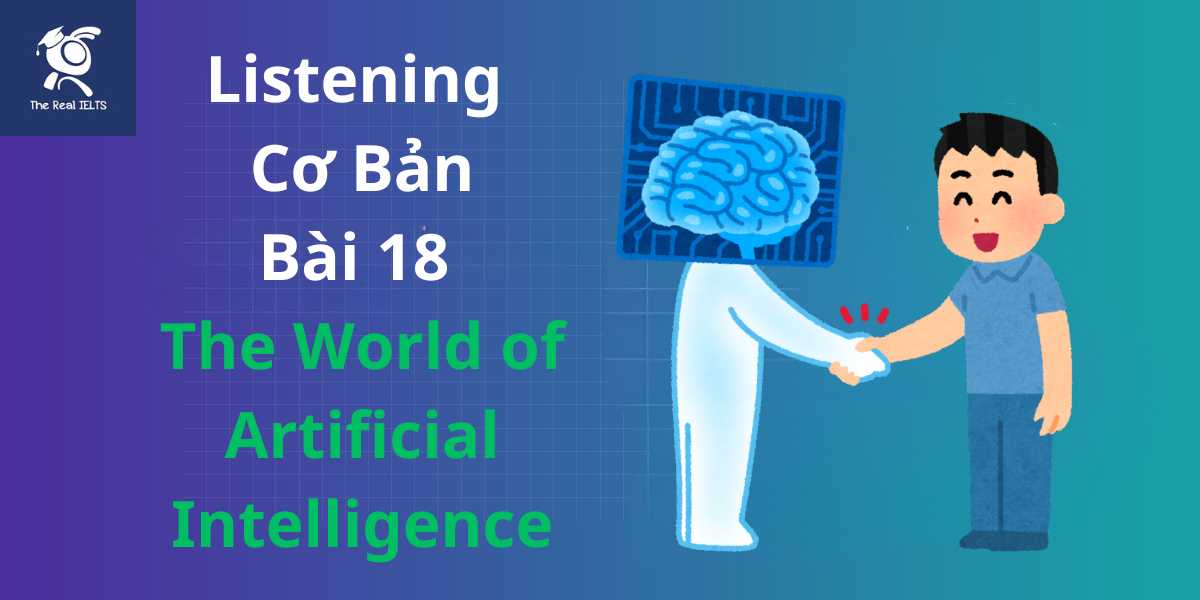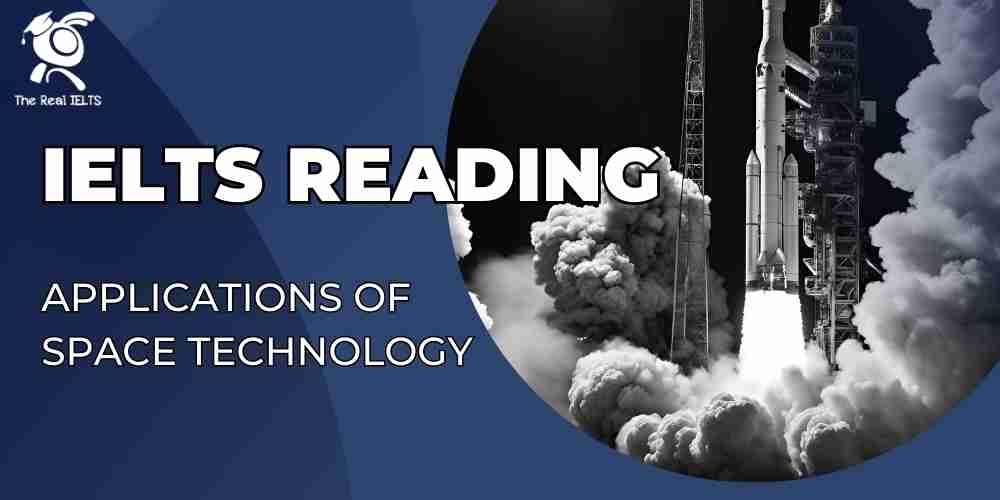Trí tuệ nhân tạo (AI) là chủ đề bài nghe trong bài Listening này. Chủ đề này đã từng được đề cập nhiều trong website. Sau đây là bài nghe có chủ đề: The World of Artificial Intelligence.
Bài Listening
Question
Section 1: Conversation Between Two Students
Questions:
- What is the basic concept of neural networks according to the conversation?
- What is the main difference between deep learning and regular machine learning as explained by Student A?
- Why is bias in AI systems a significant issue?
- What are two key aspects that developers need to ensure when creating AI systems, according to Student A?
Section 2: Lecture on AI Applications
Fill in the blanks:
- In healthcare, AI algorithms can analyze __________ with remarkable accuracy.
- Autonomous vehicles use a combination of __________, cameras, and AI to navigate roads.
- In the financial sector, AI helps in detecting fraud by identifying unusual __________ in transaction data.
- AI-powered virtual assistants are used in __________ to handle customer inquiries.
- Streaming services like Netflix use AI to __________ shows and movies to users.
Answer
Section 1: Conversation Between Two Students
- Algorithms modeled after the human brain.
- Deep learning uses multi-layered neural networks, unlike regular machine learning.
- Bias in AI systems can lead to biased outcomes, affecting areas like job recruitment and law enforcement.
- Transparency and accountability.
Section 2: Lecture on AI Applications
- Medical images
- Sensors
- Patterns
- Customer service
- Recommend
Bản Audio Script
Listening Exercise: The World of Artificial Intelligence
Section 1: Conversation Between Two Students
Instructions: Listen to the conversation between two university students discussing their recent lecture on Artificial Intelligence. Answer the questions below.
Audio Transcript:
Student A: Hey, did you understand the part about neural networks in today’s AI lecture?
Student B: Sort of. I think I get the basic concept, but it’s still a bit fuzzy. Neural networks are basically algorithms modeled after the human brain, right?
Student A: Yes, exactly. They’re designed to recognize patterns and learn from data, which makes them really useful for things like image and speech recognition.
Student B: That makes sense. The lecturer also mentioned something about deep learning. How is that different from regular machine learning?
Student A: Deep learning is a subset of machine learning. The main difference is that deep learning uses multi-layered neural networks, hence the term ‘deep.’ These layers allow the model to handle more complex data and tasks.
Student B: Oh, I see. And what about that part on ethical considerations in AI? I didn’t quite catch all of it.
Student A: The lecturer talked about the potential biases in AI systems. Since these systems learn from existing data, any biases in the data can lead to biased outcomes. It’s a big issue because it can affect everything from job recruitment to law enforcement.
Student B: That’s pretty serious. I guess it’s crucial for developers to address these biases when creating AI systems.
Student A: Absolutely. They also need to ensure transparency and accountability in how AI decisions are made.
Student B: It’s such a fascinating field, but also a bit scary. There’s so much power in these technologies.
Student A: Definitely. It’s a field that’s growing rapidly, and it’s going to shape our future in many ways.
Section 2: Lecture on AI Applications
Instructions: Listen to the lecture on various applications of Artificial Intelligence. Fill in the blanks with no more than TWO words from the recording.
Audio Transcript:
Lecturer: Today, we’re going to explore some exciting applications of Artificial Intelligence. One of the most prominent areas is healthcare. AI is being used to improve diagnostics and predict patient outcomes. For instance, AI algorithms can analyze medical images with remarkable accuracy, sometimes even outperforming human doctors.
Another significant application is in the field of autonomous vehicles. Companies like Tesla and Waymo are at the forefront, using AI to enable cars to drive themselves. These self-driving cars use a combination of sensors, cameras, and AI to navigate roads and avoid obstacles.
In the financial sector, AI helps in detecting fraud by identifying unusual patterns in transaction data. It’s also used in algorithmic trading, where AI systems execute trades at high speeds and with great precision based on market data analysis.
Moreover, AI is revolutionizing customer service through the use of chatbots. These AI-powered virtual assistants can handle a wide range of customer inquiries, providing quick and efficient service without the need for human intervention.
Finally, AI is playing a vital role in entertainment. Streaming services like Netflix use AI to recommend shows and movies to users based on their viewing history, enhancing the overall user experience.
Đọc lại bài Nghe cũ: Bài tập Listening 17: Globalization and Its Challenges.















